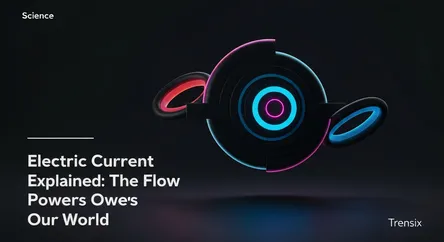Science
Electric Current Explained: The Flow That Powers Our World

An explainer on electric current, the fundamental flow of electric charge that powers everything from our homes to our technology.
What is it?
Electric current is the rate of flow of electric charge through a conductor, such as a wire. This charge is typically carried by moving electrons. Measured in amperes (A), or amps, one ampere is equivalent to one coulomb of charge (about 6.24 x 10¹⁸ electrons) passing a single point in one second. For a current to flow, there must be a complete circuit that includes an energy source, like a battery, which provides a voltage (the force pushing the electrons). There are two main types: direct current (DC), where the charge flows in one direction, and alternating current (AC), where the charge periodically reverses direction.
Why is it trending?
The concept of electric current is foundational to modern life. Its applications are in constant evolution, powering innovations in every sector. From the microelectronics in smartphones and computers to the massive motors and generators in industrial machinery, current is essential. Its role in renewable energy systems, electric vehicles, and advanced medical devices like MRI machines keeps it at the forefront of technological advancement. Understanding electric current is crucial for developing more efficient energy transmission, creating next-generation electronics, and ensuring the safety and reliability of our power grids.
How does it affect people?
Electric current is indispensable to daily life, powering lighting, heating, appliances, transportation, and communication. However, it can also be extremely dangerous. The human body is a conductor, and direct contact with an electrical current can cause severe injury or death. The effects range from a mild tingling sensation at 1 milliampere (mA) to loss of muscle control, respiratory arrest, and heart fibrillation at higher levels. This is why electrical safety standards and devices like fuses and circuit breakers, which interrupt excessive current flow, are critically important in protecting people from harm.